A year after homelessness report: Buncombe, Asheville look back on what's been done
ASHEVILLE - Nearly a year after the National Alliance to End Homelessness delivered its report to Asheville, offering more than 100 recommendations to cut its unsheltered numbers in half by 2025, implementation is underway.
Both the city and Buncombe County are poised for a complete overhaul of its homelessness response system and plans are moving forward to create a new low-barrier shelter, among dozens of action steps taken in the last 10 months.
"We really are in a different place than we were in January 2023," said Mayor Esther Manheimer, who heard the report Dec. 4 in the Banquet Hall of downtown's Harrah's Cherokee Center, along with fellow members of Asheville City Council and the Buncombe County Board of Commissioners.
"We have made a lot of progress. But what I think was clear to everyone today, listening to these presentations, and all of the guest speakers that spoke with us today, is that this is truly a community effort, it is a collaborative effort and it's getting much more efficient and effective and needs to continue to do so."
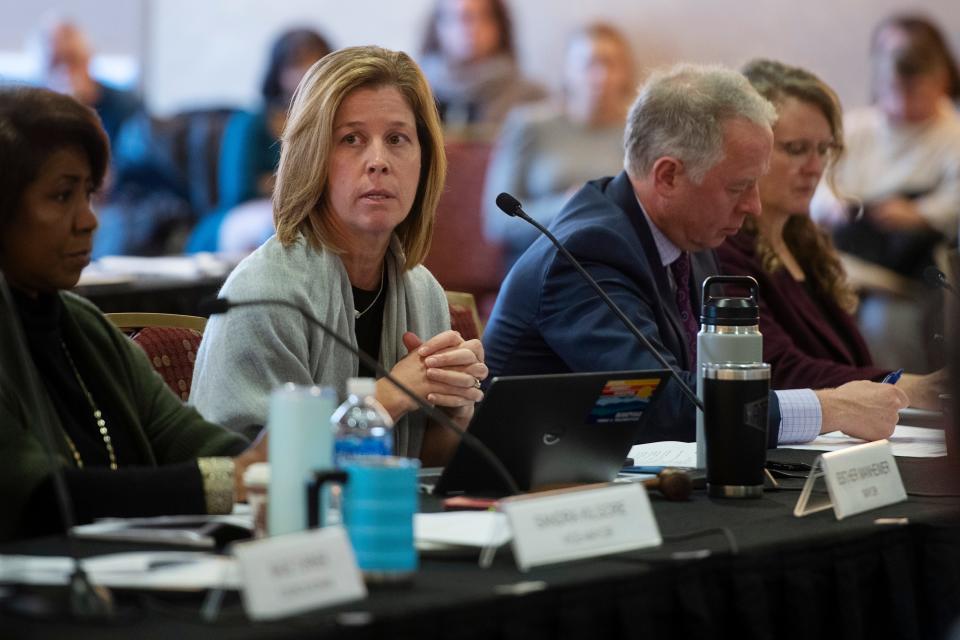
More: What's being done to address homelessness in Asheville? Events will highlight response
Why now?
It wasn't the same packed room as the initial report delivery in January, but the major players were the same. Perusing a 98-slide presentation, the appetite for change was still there — what Asheville's Homeless Strategy Division Manager Emily Ball called a continued "momentum" citywide.
The last year has seen 87 new permanent supportive housing beds at Homeward Bound's Days Inn conversion, dubbed Compass Point. It's seen the city and county fund 43 new shelter beds, securing 45 more existing beds at risk of closure, to the tune of $1.75 million.
Plus, Buncombe County hired its first homeless program manager, Lacy Hoyle, and the Homeless Initiative Advisory Committee, or HIAC, charged with governance of the area's Continuum of Care, began implementing the Alliance's recommendations through a series of work groups.
The work is necessitated by a "significant increase" in unsheltered homelessness across Asheville and Buncombe County, Ball said. At the onset of the pandemic, services decreased, needs rose, and rents spiked 41.7% in a two-year window.
COVID-19 triggered similar impacts in cities nationwide, but as Ball noted, communities that responded most effectively had a well-developed Continuum of Care.
The CoC is a planning body of people who work together to build and oversee a coordinated response to homelessness. It's a framework overseen by the U.S. Department of Housing and Urban Development. It's also necessary to become eligible for certain federal dollars.
"In our community, however, the pandemic exposed some pre-existing problems in our CoC structure," Ball said. The No. 1 priority recommendation from the Alliance — topping a list that included greater street outreach, crisis response and housing — was to restructure its system governance, namely moving it out from under the city and county.
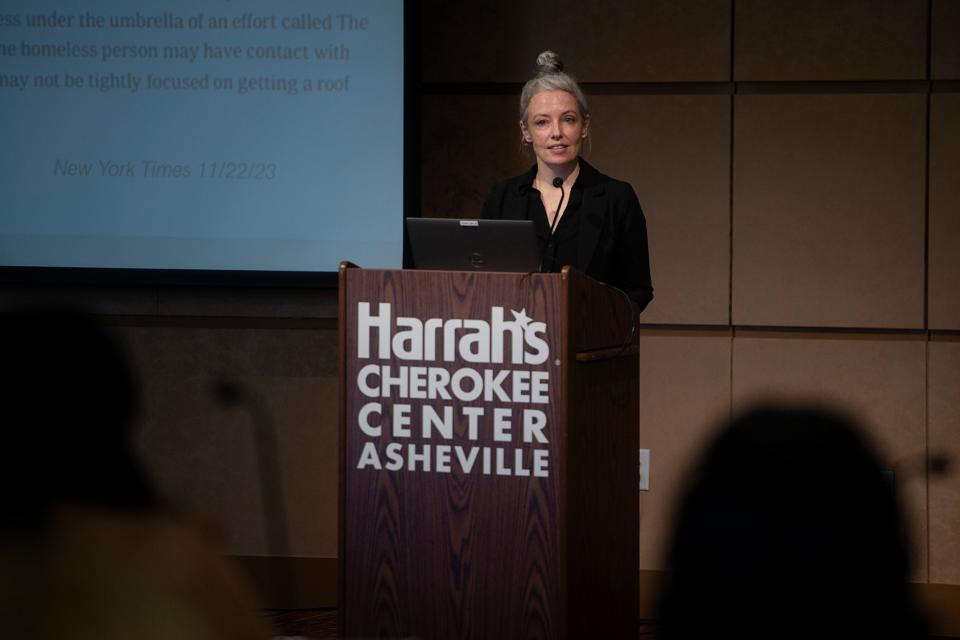
More: Ending homelessness begins with restructuring the Asheville, Buncombe system, says report
Priority No. 1: Restructuring the Continuum of Care
In January, Alliance consultants told local representatives they had never seen a structure like Asheville's. Its membership body was never formalized, and its governing body, HIAC, is composed entirely by city and county appointees.
Historically, the city's CoC structure hasn't facilitated strong results, said a presentation from Ball. It lacked shared, transparent decision making, clarity of who's doing what, how to participate, and where the power lies.
"We haven't had enough seats at the table," Ball said, "and it wasn't clear what the table was for."
There's been a longtime lack of understanding about what the CoC is intended to be, she said. It is not a standalone organization or operator, but a "formal and collaborative planning body with administrative support from a lead agency." In this case, the lead agency is the city.
As part of the restructuring, HIAC's governance work group drafted a new CoC charter. Currently, there is none. The draft charter was endorsed by HIAC in October.
Among its outcomes, the new charter would:
Restructure the CoC board. It would no longer be situated under the city or county.
Identify new board members.
Establish a membership base where members can vote and serve on committees.
Clarify roles and identify responsibilities.
Form subcommittees.
Ball said it would represent a "pivotal shift in homelessness response," essential to building a strong foundation and bringing collective efforts into alignment.
Lance Crawford, chair of the governance work group and director of workforce development at Goodwill Industries of Northwest North Carolina, took council members and commissioners through next steps.
To be implemented, the charter must first be formally adopted by the full membership of the Continuum of Care, Crawford said. But to be formally adopted, a membership must be established.
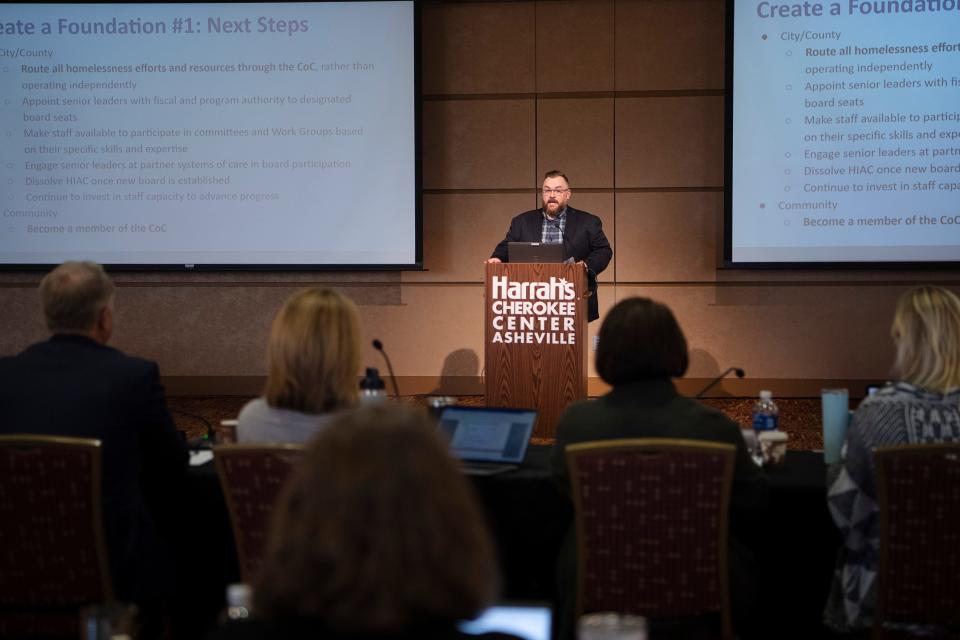
CoC membership is open to any individual or organization with an interest in understanding homelessness and taking action to address it. The membership body would vote to adopt the charter, vote on board membership — the 17-member decision-making body to take the place of HIAC — and would be eligible to serve on the board, its committees and workgroups.
HIAC's Nominating and Membership Committee is putting out a call for members now. Those interested can visit: http://tinyurl.com/CoC-Membership-indiv and organizations can visit: https://tinyurl.com/CoC-Membership-Org.
The first full membership meeting will be in early 2024, focused on charter adoption.
"Become a member of the CoC, whether that be on an individual basis or organizational basis," Crawford said. "We really believe that this, moving forward, is going to be a collective effort and it really does, truly, take all of us."
A new, low-barrier shelter for Asheville
The Alliance report recommended a 95-bed expansion for Asheville's shelter system. Since January, the city and county funded 43 new beds through the Salvation Army, Haywood Street Congregation and new downtown Safe Shelter. The beds are funded through December 2024.
That leaves a needed 52 beds — 30 of them for single individuals, and 22 "enhanced," meaning there are mental health and substance use specialists onsite. The Alliance also recommended a low-barrier shelter to meet the remaining gap, for some a long-desired goal, but often a fraught conversation.
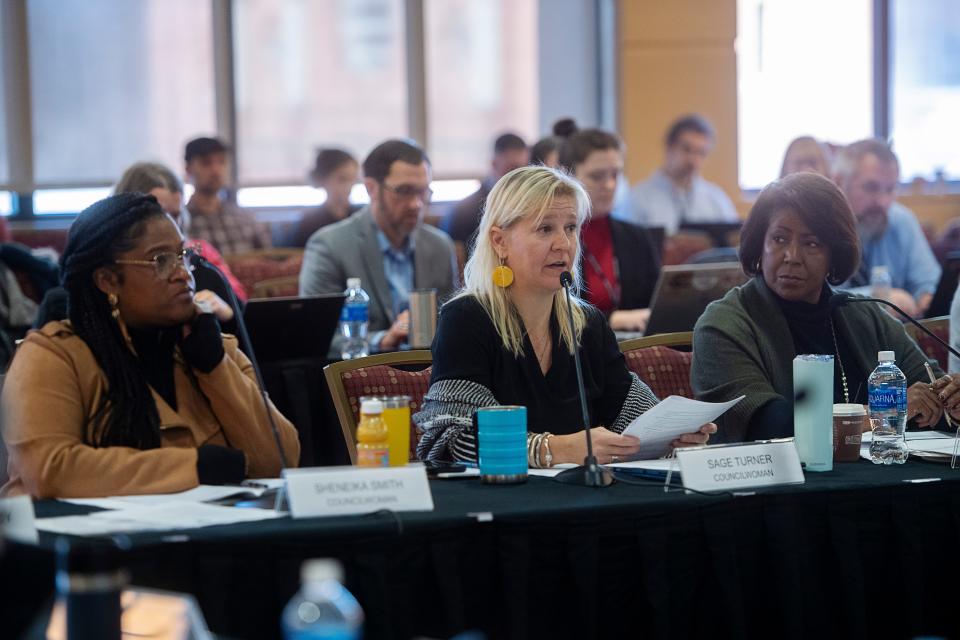
The city canceled plans to convert East Asheville's Ramada Inn into a low-barrier homeless shelter in December 2021 after outcry from the hotel's neighbors and uncertainty from financial partners. Now, the Ramada is in the process of being converted into 113 units of permanent supportive housing.
But HIAC's shelter work group renewed the search for low-barrier shelter, formalizing its recommendation to City Council and County Commissioners in July that they pursue a new homeless shelter.
In September, commissioners earmarked $3.8 million in federal COVID relief dollars for a potential new project — which board Commission Chair Brownie Newman said is intended for a low-barrier shelter, a "critical piece of infrastructure."
Low-barrier means there are limited or minimal requirements for entry into the shelter. Individuals would not have to commit to programs or services to get in. Low-barrier shelters often stay open for intake 24/7, eliminate sobriety or income requirements, allow pets and have adequate space for families.
Along with nightly beds, the facility may include a day shelter, medical care, meals, case management, transportation assistance, and behavioral health, housing placement and employment support.
A shelter team has been formed and a planning process has begun, Hoyle said. Work includes:
Evaluating existing resources.
Reviewing service models.
Considering space planning needs.
Reviewing site needs and potential site options.
Recommendations will be brought to the new CoC board in spring 2024. Hoyle said they hope to have the shelter operational by December 2024.
Other Alliance strategies
The Dec. 4 joint work session broke down its progress in terms of the study's five broad strategies:
Strategy 1: Create a Strong Foundation: Support Systems-Level Planning and Coordination
Strategy 2: Implement Evidence-Based and Inclusive Policy: Create an Equitable, Person-Centered Homeless Response System
Strategy 3: Improve System Performance Through Program Design: Decrease Inflow and Increase Outflow in the Homelessness System
Strategy 4: Improve Data Quality and Reporting: Improve Data Quality, Increase HMIS Coverage, and Report System Performance
Strategy 5: Invest in the Future: Increase the Production of/Access to Permanent Housing Solutions
The heavy-hitters, restructuring governance and new shelter options, fell into strategies one and three, respectively. Other highlights of implementation included increased training, like homeless strategy specialist Debbie Alford's new Homelessness Learning Series; strengthening data collection; and increasing permanent housing stock.
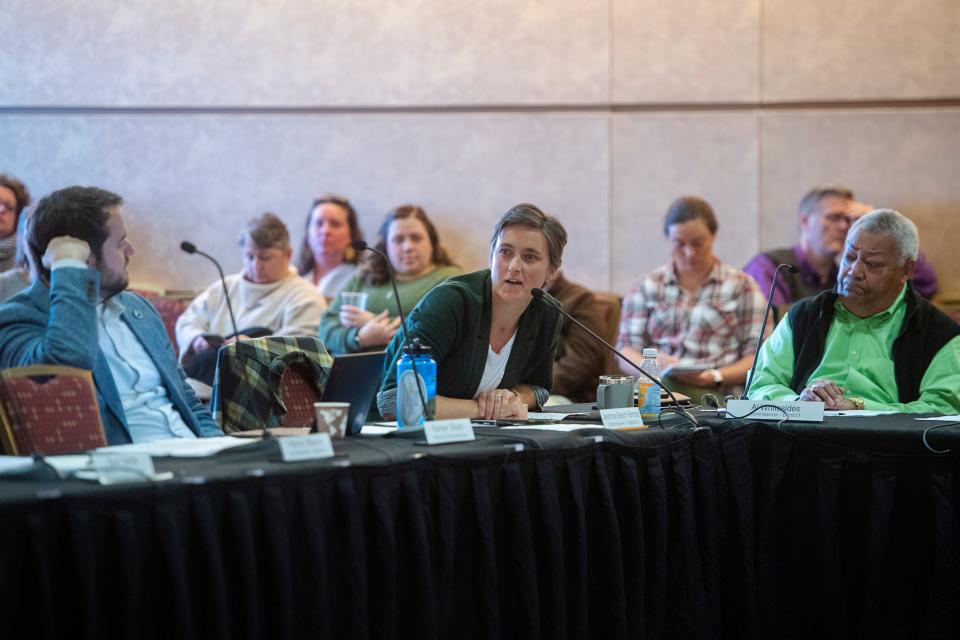
Next steps?
"Our community is ready to act. We've had such widespread engagement and participation, people being really willing to invest time, and energy, and effort into taking action to implement these recommendations," Ball said.
"As you've heard throughout today, no one can do this alone. We have to have that community-wide investment and energy, and I really have seen that from our community since the Alliance recommendations were delivered."
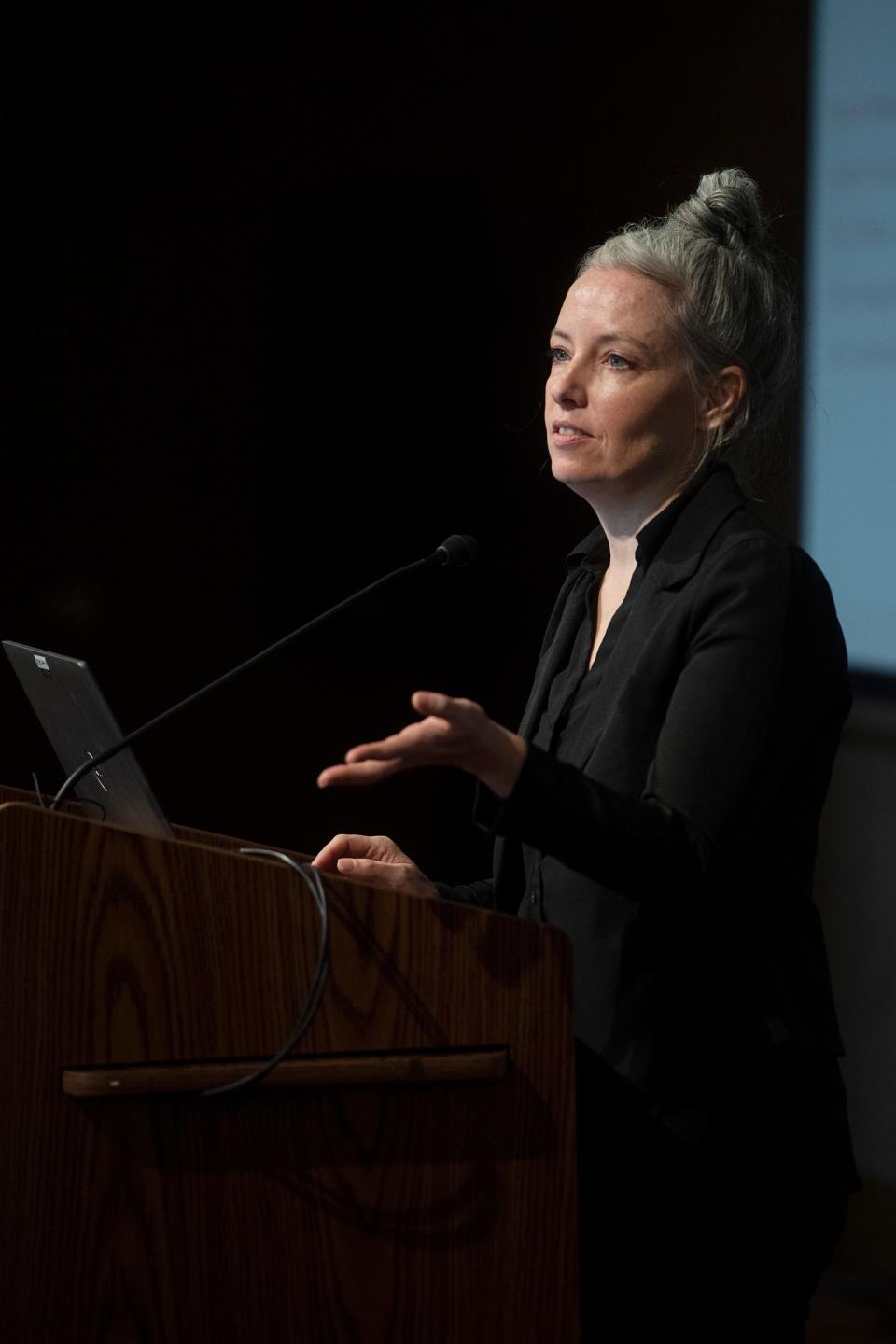
Next steps:
For the Continuum of Care: The membership drive is happening now. Members will be invited to orientation in early 2024 to adopt the charter. At its second meeting, they will vote on board members.
For the community: Become a member of the CoC. "There's no 'they,'" Ball said. "There's no such thing as someone else who is coming to rescue our community from homelessness."
For the city and county: One representative from each governing body will act as a non-voting liaison on the CoC's new board, per the draft charter. Staff will be made available to serve on committees and work groups. The municipalities can provide addition and ongoing resources as the system builds out, including staff to develop and maintain infrastructure.
More: Debunking homelessness myths: Asheville experts take on 5 common misconceptions
More: As I-26 Connector looms, Asheville considers future of downtown's 'western gateway'
More: Food security in Asheville, Buncombe County threatened by 'socioeconomic perfect storm'
Sarah Honosky is the city government reporter for the Asheville Citizen Times, part of the USA TODAY Network. News Tips? Email shonosky@citizentimes.com or message on Twitter at @slhonosky. Please support local, daily journalism with a subscription to the Citizen Times.
This article originally appeared on Asheville Citizen Times: 1 year later: What's been done to reduce homelessness in Asheville?

